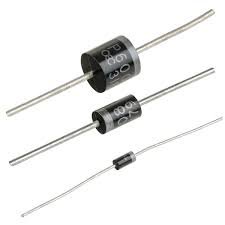The Light Emitter Diode (LED) is a component present in almost all electronic devices and probably will dominate the public illumination. This post will explain how they work.
The LED is a type of diode which emits light when it is directly polarized. To know what are diodes, click in the button below.
 DiodesClick here
DiodesClick here
How it turn on?
Like every diode, the LED has a semiconductor material type p (doped with lack of electrons) and a type n (doped with excess of electrons). In p-n junction, or active region, when electron from n side go to p side, light is emitted in the junction. It happens because electrons from n side were in conduction band with bigger energy and go to valence band with lower energy.


Here we have the component`s internal structure.

A more detailed vision of the layers.

Colors of LEDs
A silicon or germanium diode emits light when it is direct polarized, but this light is in infrared frequency, by that, heat, and it is very weak. When the semiconductor is another material, the light is stronger and has other frequency. This table shows the relation between the semiconductor material and the emitted color.
![]()
You can see that some colors use the same semiconductor material. Choose the right material is not enough to produce the desired color, it is necessary to dope in right quantity and choose which elements to doping. This way, we will have different distances of energy gap which will produce different wavelength.

Other types
There are other types of LEDs. This is a type of LED which blinks in one frequency without any external circuit. Called self blinking LED.

The LEDs with three terminals are bicolors, can light in two colors and the combination of both.

This is the RGB LED, are three in one color with blue, green and red. The combination of primary colors can create all other colors.

And there is the OLED or organic LED with organic doped material. In the future I will publish a post about this new component.



